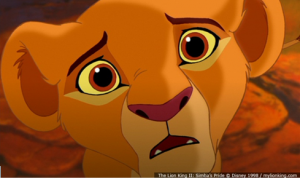News
Latest Lion Aid News
Sad for Simba?
Tuesday 29th January 2013
|
Where have all the pridelands gone?
There are some problems with the article, not least that the author does not distinguish between commercial poachers after rhino horn and elephant ivory and those people out for retaliation following loss of livestock to dangerous predators. What is true is that in terms of wildlife both activities achieve the same net result – an ever-increasing cycle of destruction. It is said that in Kenya about 70% of wildlife occurs outside strictly protected areas like national parks and reserves. This is largely because the gazetted protected areas are too small to form viable ecological units that can contain wildlife year-round during wet and dry seasons. In addition, some wildlife species, mainly the ones without teeth and claws, have been historically well tolerated on extensive Maasai grazing lands. Nevertheless, and after many years, the real question has not been satisfactorily answered in Kenya – “can dangerous predators like lions live with humans and their livestock?” This lack of an answer has not resulted from a lack of ideas attempting to make living with predators less onerous for the rural people expected to do so. These include:
Conservation of large predators which impact on human populations by preying on livestock and indeed cause loss of human life is one of the most difficult challenges we face. We have not done well in the past as evidenced by the great decline in all large predator populations all over the world. Past formulas for conservation have not worked well, or at all, not because the ideas were wrong but in many instances because the application of the formulas did not sufficiently benefit the people expected to live with wildlife. This is true both for consumptive and non-consumptive users. Also, as fellow carnivores, humans are often in direct competition for wildlife prey (largely through poaching) with lions leading to a diminution of natural prey bases and an unsurprising turn towards domestic stock by predators. This engenders an ever-increasing cycle of human-predator conflict. In addition, direct poaching of predators like lions seems to be a growth industry to satisfy both the Traditional Chinese Medicine market now deprived of tiger products and the demand for teeth, claws, skins and skulls to supply the tourism industry in many lion range states. Not only that but lion products like fat are used in Nigeria to treat a variety of ills, lion skins have ceremonial value in many African countries (as do leopard skins), and lion cubs are taken to supplement the lion breeding industry (for trophy hunting) in South Africa and to supply the exotic animal trade in places like the United Arab Emirates. Essentially, the decline in lions across Africa has not unsurprisingly resulted from an overwhelmingly negative perception of these dangerous animals by an ever-growing human population. In addition, lions are susceptible to a variety of introduced diseases like canine distemper and bovine tuberculosis, the more so because lions are naturally infected at very high levels by feline immunodeficiency virus, a disease that reduces immune competence and cub survival. Also, organizations like CITES supposedly regulating the international trade in animal and plant products to ensure such commerce does not negatively impact on conservation status stubbornly insist that trophy hunting offtake (accounting for 70-80% of all trade in lion products) is not trade – a lion trophy is merely a “household and personal effect”. Finally, conservation organizations like WWF and the Panthera Foundation confuse clarity as they continue to see commercial offtake of lions as a positive conservation benefit. So what way forward for lions? There are positive developments. Botswana banned trophy hunting of the species in 2008 and a few weeks ago Zambia also announced an indefinite moratorium. More nations will doubtless follow suit and we are applying pressure where appropriate. To prevent further declines, we have accepted a fall-back position to ensure at least survival of lions in nationally protected areas that have a long-term probability for survival of viable populations. The viability of those areas will of course depend on their overall income from non-consumptive tourism, and many African nations have not yet developed the infrastructure to facilitate access to some of the most beautiful areas in the world. More international funding should be made available to intelligently conserve lions – after all something like $100 million was pledged to conserve tigers. Lions are an iconic species all over the world, and ensuring their survival as a world heritage is incumbent on all of us, not just the lion range states often struggling to make ends meet. And finally, can people be expected to live with lions? That remains the biggest unanswered question that many seek to sweep under the carpet of conservation convenience. If 100 lions are killed per year in Kenya (out of a current lion population we estimate at 1,200-1,400 in a nation with a wildlife tourism income estimated at $500 million per year), then there continues to be a major disconnect between theoretical and realistic conservation. Conflict mitigation must be better addressed by Kenya as it is one of Africa’s countries most lauded for setting conservation examples. Good conservation starts at home, and so far it seems that Kenya is failing her lions, one of the biggest money spinners of international tourism and highly important to Kenya’s national heritage and culture. Picture credit: Disney Corporation Please support us if you can to conserve the remaining fragile lion populations. Thank you. Tags: lions, communities, Kenya, poachers, elephants, rhinos, ivory, rhino horn, The Economist, Categories: Economics of Wildlife |
Posted by Pieter Kat at 13:26
No comments have been posted yet.
Add a new comment
Existing user
New user sign up




